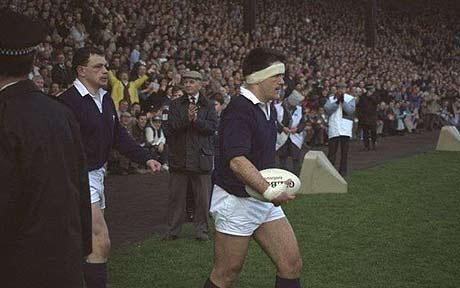Scotland’s rugby brethren have traditionally struggled to beat the English on any kind of regular basis since the countries first locked horns back at Raeburn Place in 1871.
Twickenham, in particular, has become such a graveyard for Tartan dreams that the RFU might as well pin up the words “Abandon Hope All Ye Who Enter Here”, whenever the Scots arrive in London.
Yet, even though Calcutta Cup success only happens infrequently, that simply makes the triumphs all the sweeter and, here, the Press and Journal looks back at five of the more memorable performances against the “Auld Enemy”.
2000
SCOTLAND 19, ENGLAND 13: It had been a miserable Six Nations campaign for the Scots, whereas the English juggernaut rolled into Edinburgh in April, in search of another Grand Slam.
However, on a rain-spattered afternoon at Murrayfield, the hosts regained their pride with a superbly committed display, which gradually knocked the stuffing out of their rivals.
England led 10-9 at the interval, courtesy of Lawrence Dallaglio’s try and Jonny Wilkinson’s conversion and penalty, but the Scots remained in contention with Duncan Hodge enjoying the sort of heroics which will never be forgotten.
The Edinburgh stand-off eventually secured all of his side’s points with four penalties, in addition to converting his own try when he dived over at close range, with his pack in the ascendancy. At once, the Saltires were waved furiously, even as the visitors sulked.
1990
SCOTLAND 13, ENGLAND 7: We couldn’t not include this match. From the moment that David Sole famously marched his men out, heads high and jaws set in a resounding declaration of intent, this March occasion was one of the most lip-smacking contests in rugby history.
Both teams were going for the Grand Slam, but Craig Chalmers sent his country in front with two early penalties and, despite England narrowing the gap with a try from Jeremy Guscott, the visitors turned down several kicking opportunities, either through confidence or arrogance.
Undaunted, Sole’s personnel grabbed a precious try, early in the second half, when Gavin Hastings kicked ahead, and Tony Stanger grounded the ball, even as Bill McLaren strove to maintain his impartiality.
Thereafter, oblivious to the increasingly desperate attempts by the English to retrieve the situation, they were repulsed by the wonderful defensive efforts of their adversaries and the spoils belonged to Scotland at the end of what was a titanic struggle.
1986
SCOTLAND 33, ENGLAND 6: This remains a record margin of victory for the Scots in the history of the Calcutta Cup and turned into one of those rare afternoons where they completely overwhelmed England, wining the second half 21-0 in the process.
John Beattie flattened Wade Dooley straight from the kick-off and, with the England lock seeing stars for the rest of the match, the Scots ripped through their opponents.
The hosts scored three tries, from Matt Duncan, Scott Hastings and John Rutherford, while Gavin Hastings landed the trio of conversions and added another five penalties as his compatriots took charge. A brace of Rob Andrew penalties was all that England had to show for their labours and this result left scars among several in their ranks.
1983
ENGLAND 12, SCOTLAND 22: This was the last time the Scots triumphed at Twickenham (although they drew 12-12 in 1989) and they achieved their success with the help of some of the proudest warriors ever to pull on a Scotland jersey, including stalwarts such as John Beattie, Jim Calder, David Leslie and Iain Paxton.
The match was locked at 9-9 after 40 minutes – with Dusty Hare and Peter Dods cancelling each other out in the kicking stakes, whilst John Horton and Keith Robertson exchanged drop goals.
But the visitors seized the initiative the longer the tussle raged on and scored touchdowns through lock forward, Tom Smith, and the ubiquitous Roy Laidlaw.
This was a significant result for the Scots and they built on the confidence derived from the victory, by winning the Grand Slam the following season, sparking a glorious period in Scottish rugby.
1938
ENGLAND 16, SCOTLAND 21: The Scots scored five touchdowns to one, and the close nature of the final victory margin testifies to the fact there were only three points awarded for a try in those days.
However, that shouldn’t detract in any way from the sublime exhibition of running rugby served up by the visitors to Twickenham, and particularly their captain, Wilson Shaw, whose name will forever be linked with this contest.
Shaw seized a brace of tries, as did his compatriot, Willie Renwick, and Charles Dick also crossed England’s line, with the home side unable to repel the mesmerising attacks of the Scottish backs.
They managed one try in response – from Jimmy Unwin – but this was an afternoon when the London stadium marched to a Caledonian tune.
